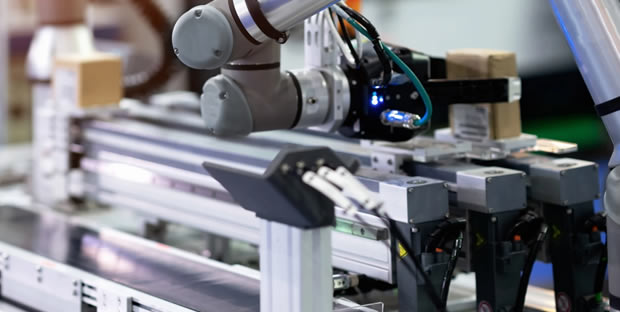Pepperl+Fuchs Enhances R1000 Distance Sensor with PROFINET Integration
Pepperl+Fuchs' R1000 distance sensor now seamlessly combines millimeter-level accuracy with native PROFINET support, transforming it into an embedded solution for advanced motion and positioning tasks. While obtaining precise distance data is one thing, effortlessly integrating it into a control network is another. This is precisely where the newly added native PROFINET support of the Pepperl+Fuchs R1000 distance sensor shines, offering rapid, synchronized communication that aligns perfectly with real-world industrial settings, eliminating the need for additional converters or complex wiring.
R1000 Sensor Series Now Includes PROFINET-Compatible Models
Why PROFINET?
Pepperl+Fuchs' latest iteration of the R1000 distance sensor series introduces native PROFINET support and integrated switches, making it easier for engineers to incorporate high-precision sensing technology into distributed PLC systems. Whether operating high-bay warehouses, automated shuttles, or twin-hoist cranes, this version reduces network friction while retaining all the exceptional features of the R1000 series.
Built for Harsh Environments
At the heart of the latest models remains the R1000-grade sensor, which employs Pulse Ranging Technology (PRT) to consistently deliver repeatability accuracy of <1 mm across measurement ranges of up to 300 meters. The sensor operates using a visible Class 1 red laser, simplifying alignment processes, especially during installations in hard-to-reach locations.
Additionally, the sensor's compact housing, with a depth of just 81 mm and an IP67 protection rating, allows for easy installation in confined spaces while providing resistance to dust and moisture. Built-in metal threaded inserts enable direct mounting of the sensor without the need for additional brackets, which is particularly useful in short-distance installations or vibrating environments. For long-distance setups requiring fine alignment, Pepperl+Fuchs offers optional adjustment accessories to assist with calibration.
Dual R1000 Sensors Enable Real-Time Anti-Skew Control for Bridge Cranes via Precise PROFINET-Linked Position Feedback
Accurate Distance Measurement
Keeping Cranes Centered
In bridge crane systems, even slight tilts between the trolley's left and right movements can lead to drift, misalignment, or mechanical strain. By installing an R1000 sensor on each side, the system can actively compensate for y-axis tilts while tracking long x-axis movements. Combined with the real-time feedback provided by PROFINET, this setup enables reliable anti-skew logic without introducing delays or jitter into the control loop.
Automated Parking and Shuttle Positioning
In automated parking systems where space is tight and precision is paramount, shuttles must be positioned correctly to prevent unnecessary damage to components. The compact size and precise non-contact measurement capabilities of the R1000 facilitate this. Since the sensor now supports native PROFINET, it can be directly connected to the building control system, simplifying data flow, diagnostics, and wiring.
Chemical and Humid Environments
In electroplating plants, sensors must withstand high humidity, corrosive vapors, and long linear tracks. The R1000 models have been proven in such applications, where multiple sensors operate in parallel without interfering with each other. Thanks to the PRT's clear spot geometry, as well as the sensor's resistance to contamination and ambient light, the system remains stable even under non-ideal conditions.
PROFINET Meets Precision Demands
The R1000 distance sensor, now PROFINET-enabled, is designed with engineering priorities in mind. Its precise distance measurements, direct integration with PROFINET systems, and robust mechanical construction make it highly suitable for industrial applications. Furthermore, the sensor combines millimeter-level accuracy with native Ethernet support, helping to reduce setup times and making it easier to integrate into complex automation environments.





